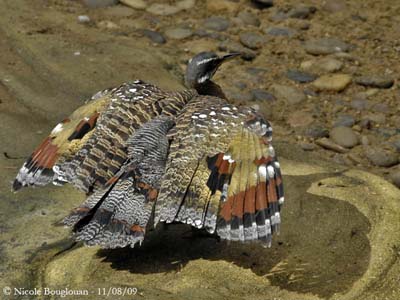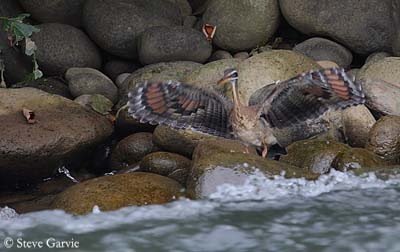
Sunbittern
Eurypyga helias
Eurypygiforme Order - Eurypygidae Family
BIOMETRICS:
Length: 43-48 cm; Weight: 180-220 g
LONGEVITY: 15 years
DESCRIPTION:
Sunbittern is the only member of the family Eurypygidae. It is a wonderful bird, mid-rail mid- heron, which performs spectacular displays.
We can find three subspecies: E.h. major, E.h. meridionalis, and E.h. helias. They differ on upperparts’ pattern.
VOICE: SOUNDS BY XENO-CANTO
Sunbittern utters high, penetrating whistle “wuuuuuuuu”, often repeated twice. Alarm call is a loud “kak,kak,kak,kak” of several notes. When the bird is disturbed, it gives high-pitched, thin trill.
Sunbittern is mainly vocal at dawn and dusk.
HABITAT:
Sunbittern frequents the shores of shady streams and small wooded pools. It is also found in dense second growth thickets, near water. It can be seen from sea-level up to 1800 metres of elevation.
RANGE:
Sunbittern lives in the tropical regions of the Americas, from Guatemala to the Pantanal of southern Brazil and Paraguay.
Sunbittern also uses the “broken-wing” display for distraction. For that, the bird ruffles its back feathers, while an open wing is dragged on the ground. This behaviour is accompanied by hisses or rattles.
At nest, both adults perform other display as bittern-like facing, with fluffed plumage, body-swaying, forwards bill darting and treading.
Before the breeding started, Sunbittern frequently performs flight displays above the tops of the gallery forest trees, at about 10 to 15 metres above. During these flights, they give their “kak,kak,kak,kak”, while they glide downwards with open wings hanging from the body, displaying the beautiful pattern. Several other displays are made at nest-site by both mates, accompanied by duetted rattles.
Sunbittern is sedentary in its range, performing only short movements to permanent wetlands.
FLIGHT:
unbittern flies low above water with rapid wing beats and long glides with its broad rounded wings.
PROTECTION / THREATS / STATUS:
Sunbitterns’ populations are not threatened. This species can be common to uncommon or rare, according to the locality or the country.
Sunbittern depends on forest with water, and it is sensitive to the changes or destruction in its habitat.
It has some predators such as monkeys for the eggs, and raptors which harass the incubating adult. But the “frontal display” is always used and often successful.
This species lives and breeds well in captivity and can become tame.
Fr: Caurale soleil
All : Sonnenralle
Esp : Tigana
Ital : Airone del sole
Nd : Zonneral
Russe : Солнечная цапля
Photographs by Steve Garvie
RAINBIRDER Photo galleries
Text and pictures of the captive birds by Nicole Bouglouan
Pictures taken at London Zoo
Sources :
HANDBOOK OF THE BIRDS OF THE WORLD Volume 3 by Josep del Hoyo-Andrew Elliott-Jordi Sargatal - Lynx Edicions, 1996, 821 pages - ISBN : 8487334202
L’ENCYCLOPEDIE MONDIALE DES OISEAUX - Dr Christopher M. Perrins - BORDAS - ISBN: 2040185607
A GUIDE TO THE BIRDS OF MEXICO AND NORTHERN CENTRAL AMERICA by Steve N. G. Howell, Sophie Webb - Oxford University Press - ISBN: 0198540124
A GUIDE TO THE BIRDS OF COLOMBIA by Steven L. Hilty and William L. Brown
Princeton University Press – ISBN 069108372X
Wikipedia (Wikipedia, The Free Encyclopedia)
CREAGUS@Monterey Bay (Don Roberson)

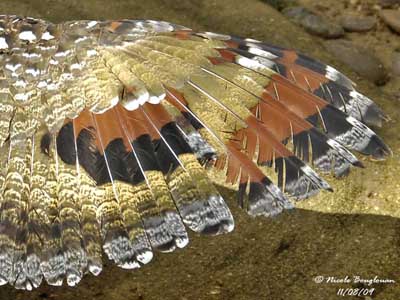
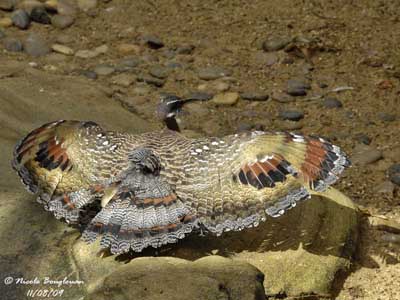
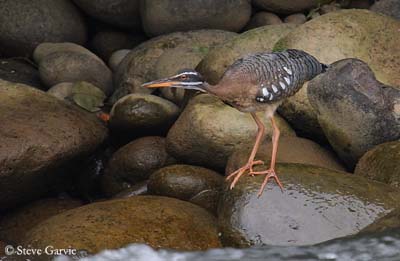
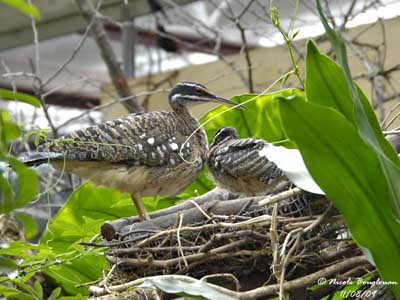
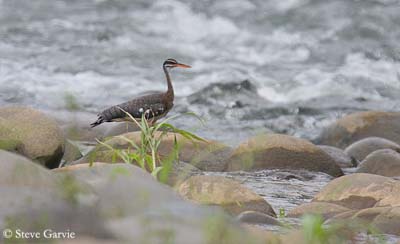
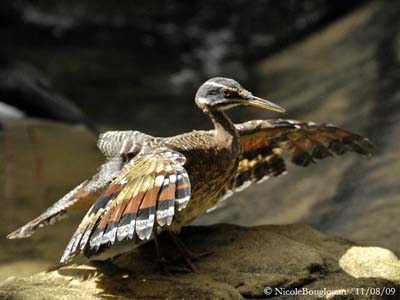
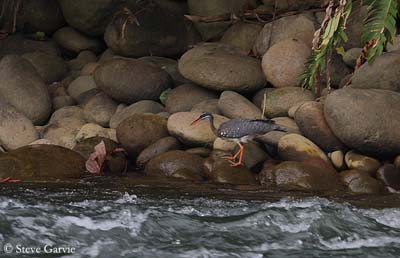
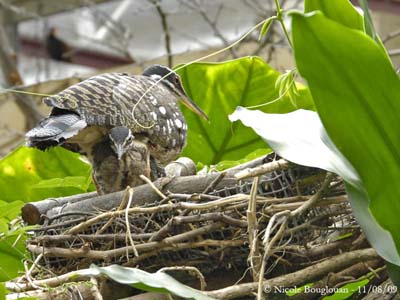
Female usually lays one or two pinkish-buff eggs with purplish spots. Incubation lasts about one month, shared by both parents.
At hatching, the chicks are covered with creamy-white down with black marks on head, neck and back. Both adults brood, feed and care them. They fledge about 22 to 30 days after hatching.
Young begin to perform some defensive displays as adults when still at nest. They depend on parents for food for two months or more after fledging.
This species usually produces one brood per season, sometimes two is the first is failed.
DIET:
Sunbittern feeds mainly on vertebrates and invertebrates such as spiders, flies, dragonflies, beetles, larvae, crabs, snails and earthworms. But is also takes fish, amphibians, eels and lizards. It forages as into shallow water or on land.
